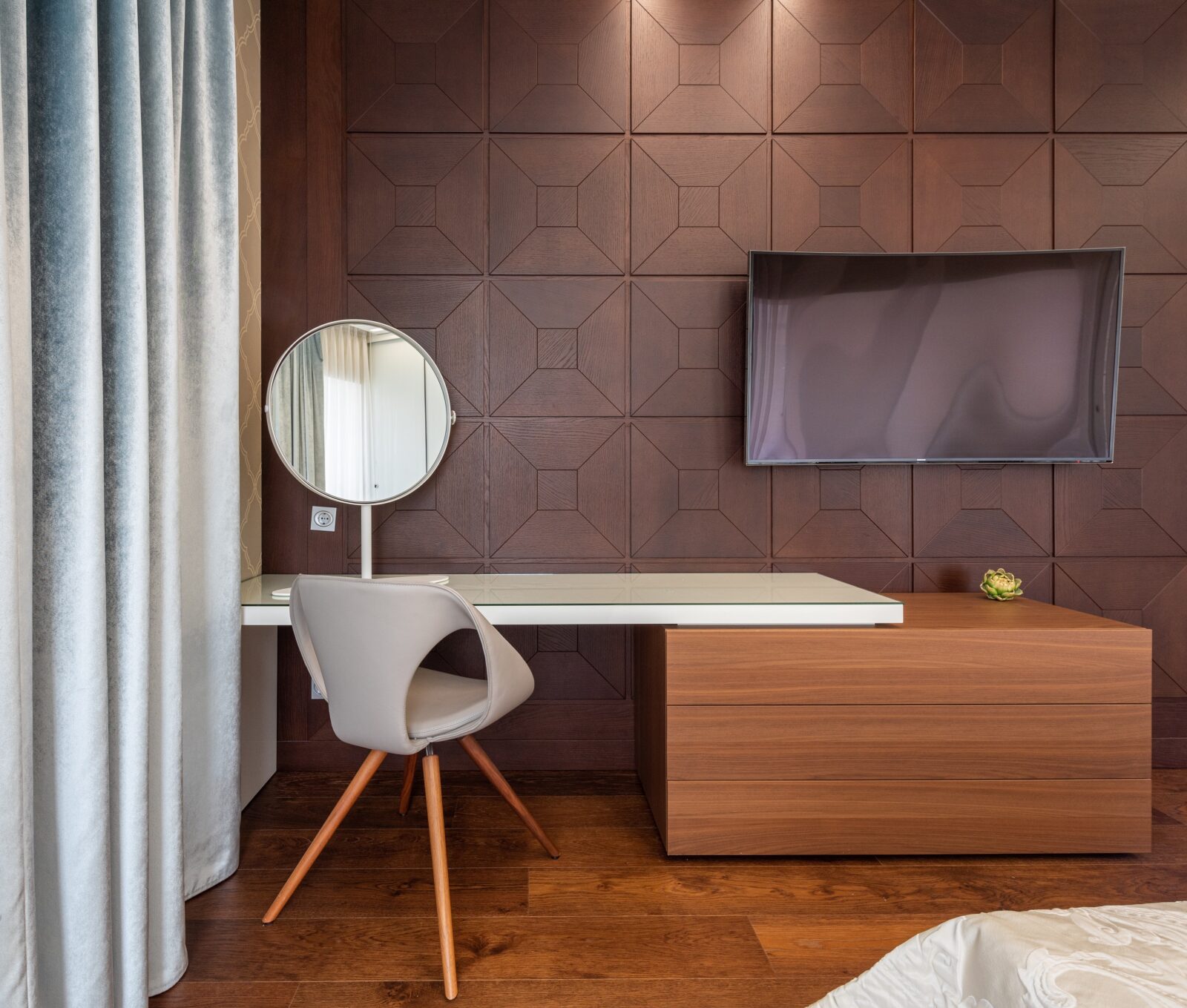Whether it’s a palatial estate or a studio apartment, every home needs window treatments. These are essential not only for creating privacy but also for blocking out light. Unfortunately, many people only consider window treatments as an afterthought. However, putting more effort into window treatments can truly elevate a room and have a major design impact.
So how do you know you’re choosing the right window treatments? The process isn’t too complicated as long as you understand the basics. I recently spoke with some of the top names in interior design to learn the latest window treatment trends, as well as how to choose the right ones for any room in the home.

For more versatility, Tina Ramchandani recommends a combination of shades. (Jacob Snavely / Tina Ramchandani Creative)
Consider The Room Before Anything Else
There are many different types of shades available. What you choose will ultimately depend on style preferences, budget, and availability, but considering the specific purpose of each window treatment in a room is the first thing to think about. “If I’m designing the bedroom, I tend to go for blackout lining drapes or shades, unless the homeowner likes to rise with the sun. For an office, roller blinds. For the living room, privacy lining is usually enough or even sheer if you just want a lighter or effervescent look,” says Fanny Abbes of The New Design Project.
Every home will ideally have a combination of shades, but most won’t need more than two or three different types. “In most of my homes, we recommend a combination of roman shades and curtains or drapes. I like having the option to bring a sheer roman down during the day. This allows light to enter, but the sheer offers a bit of privacy,” says interior designer and founder of Tina Ramchandani Creative, Tina Ramchandani. “I recommend curtains, whether lined or blackout, to be drawn to a close when sleeping, which offers light reduction, noise reduction, and another layer of privacy.”
Opting For The Right Fabric Is Key
After deciding the type of window treatment that will be used, the next step is to choose a fabric. “The function is crucial here. If there is a lot of sunlight, I recommend selecting a fabric that is not too prone to sun discoloration. Otherwise, you’ll need to add a lining,” says Abbes.
In very sunny rooms, you may want to consider a fabric like Sunbrella which is engineered to be fade-free. This also protects your investment because these shades can stay looking new far longer than most other fabrics in even the brightest of spaces.

A kitchen by Tanya Smith-Shiflett of Unique Kitchens and Baths shows how window treatments can be used to elevate other parts of the home, in this case the kitchen. (Stacy Goldberg / Unique Kitchens and Baths)
In rooms where controlling sunlight isn’t a major issue, it’s always a good idea to go with natural fabrics. “Fabrics like linen, silk, or cotton sheers to light wool, whether it’s for drapery or a clean Roman shade is my go-to. There is something just so beautiful and cozy about how the light shines through a natural fiber, which a synthetic just isn’t capable of,” explains Jessie Neuman of Numi Interior Design.
Proper Mounting Is Essential
For drapery on a wall-mounted rod, Neuman recommends hanging the rod a bit higher than the top of the window frame. “This will create the illusion that your window is larger. It also adds a subtle romantic feel to a sometimes ordinary window,” explains Neuman.
Be careful not to place the rod too high in the window frame. Stephanie Purzycki, an interior designer and co-founder of The Finish tells me drapes should never be more than a quarter-inch off the floor with ⅛ of an inch being ideal.
Ceiling-mounted shades are another stylish choice. “[Choose] a clean, simple light-filtering roller shade or a natural and woven option. Again, it’s just about the way the light shines through and the energy it creates in your space. No matter which direction you go in, keep it cozy when it comes to your windows,” says Neuman.

The right window treatment can add a decorative touch and make any space feel more comfortable.
Install Window Treatments In Unexpected Places Like The Kitchen
While most homeowners don’t install window treatments in kitchens, they can add a decorative touch and make the space feel more comfortable. “I don’t always recommend window treatments in kitchens, but recently one of our clients was sensitive to light. We installed some beautiful shades with aged brass finishes throughout the home that allowed natural light during the day but darkened the room at night. If a client wants window treatments in the kitchen, I always recommend using drapes or shades that allow as much natural light into the room as possible,” says Tanya Smith-Shiflett of Unique Kitchens and Baths.
Don’t Forget A Cornice
When it comes to window treatments, cornices can be the icing on the cake. “Cornices can be quite useful and functional especially with roller blinds because they hide the mechanism using nicer fabric. Ideally, I prefer an inside mount for a cornice (to avoid a box sticking out in front of your window) but depending on your windows and the architecture of your room, it’s not always possible,” says Abbes.










